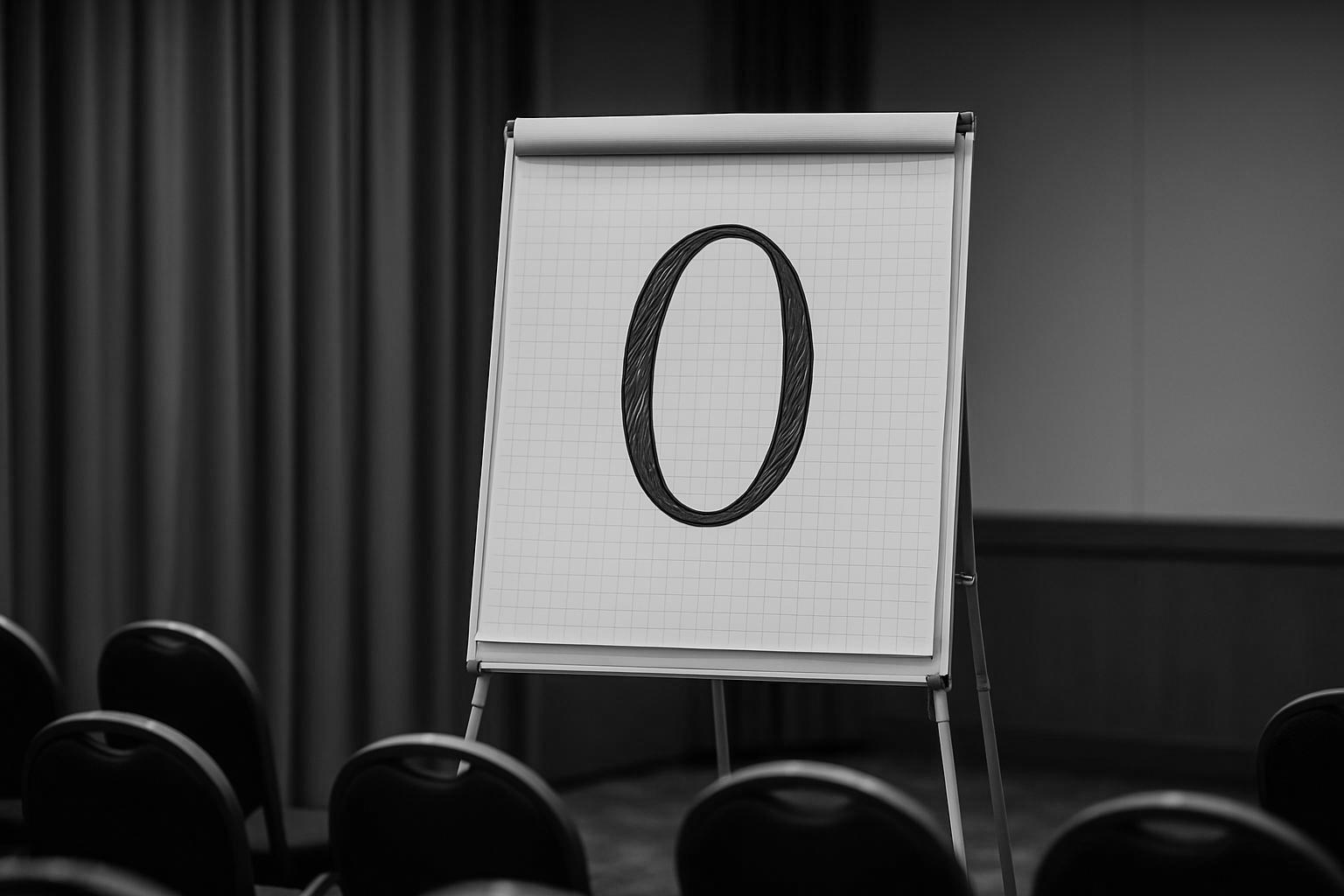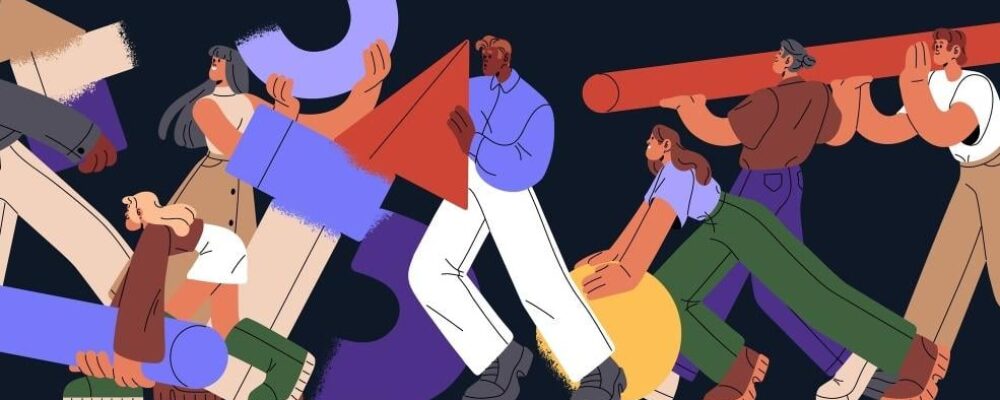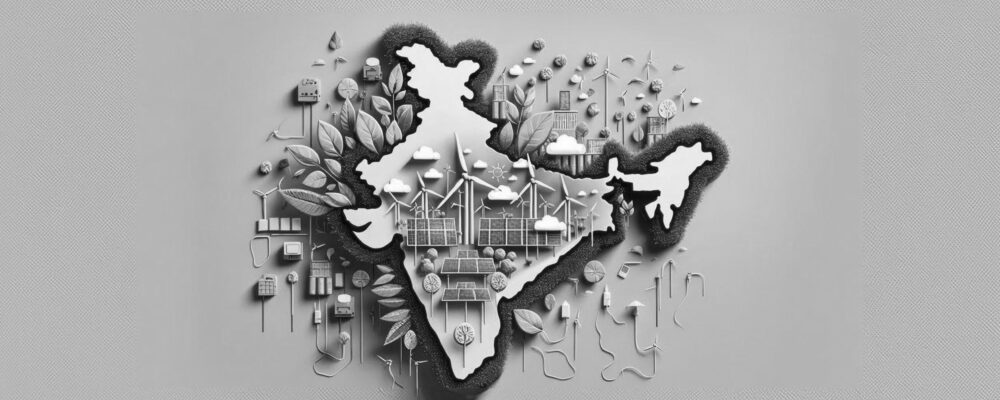
Not long ago, I was invited to a “brainstorming session” at a high-tech company. The major investor, who had just taken over, wanted my view on what exactly he’d walked into.
I expected an intimate, strategic meeting. Instead, I observed a full-scale corporate production. Every senior executive and mid-level manager had been summoned to the company auditorium.
The CEO stood on the podium. We were here, he said, to save the company through bold ideas. What followed was not brainstorming but bureaucratic theatre. Executives stood up one by one to deliver polished performances and vague promises. What they were really saying was simple: Give us more money. Trust us. This time will be different.
As the hours dragged on and I began quietly plotting my escape, something memorable happened. The major investor — unknown to most in the room — rose from his seat, walked calmly to the stage, grabbed a marker, and drew a large zero on the flip chart. Then he walked out.
The room erupted. Who was he? What did the zero mean? Protest? Art? A silent threat? The CEO, pale, turned to me, asked me what the zero meant. I was sorely tempted to play guru, to try to decode it for him on the spot.
But I resisted the temptation to invent an immediate interpretation and instead offered a radical suggestion. I told him to sit with the discomfort. To listen to the buzz around the building. To let confusion do its work. And maybe to sleep on it. To my surprise, he agreed.
The wisdom of zero
Left alone, I also stared at the zero. Could it mean zero tolerance? That the investor’s patience had run out? Or zero hour? That time was up? Or was it a declaration that all the talk, all the grand strategies and performance theatre, had added up to nothing?
Knowing the investor, I suspected something more cunning. He wanted to inject not-knowing into a room drunk on certainty and buzzwords. He tried to disrupt the executives’ comfort zones. To shake loose a little real thinking. Or maybe, like me, he just really hated meetings.
The next morning, the CEO told me that the incident had gnawed at him all night. He realised he’d been avoiding hard decisions. So he came up with a real plan that addressed the company’s core problems. The silent investor was apparently impressed. The CEO wasn’t fired, he was empowered. Not-knowing had saved the day.
Sitting with “uncertainties, mysteries, doubts”
Not-knowing is hard. We’re wired to chase certainty. We want to fix problems, and to be seen fixing them. Even in coaching or therapy, where the job is to explore, coaches and therapists often find themselves quietly preparing rescue missions. They want to offer answers, wisdom, closure. But the truth is, telling people what to do rarely works. Insights that stick are the ones people arrive at themselves.
If we can sit through the discomfort of not-knowing, space opens up for reflection and transformation. If we resist the urge to tidy the mess too quickly, we sometimes find that the mess itself holds the answer.
The English poet John Keats called this “negative capability” — the ability to remain “in uncertainties, mysteries, doubts, without any irritable reaching after fact and reason.” For Keats, and for thinkers after him, negative capability was a way of approaching the world. It meant setting aside the impulse to control or fix, and sitting with ambiguity long enough for something deeper to emerge.
Zen masters use kōans – paradoxical anecdotes or riddles without solutions – as a way of bypassing the analytical mind. Kōans are meant to disturb. To puzzle. To make your usual thought patterns sputter and fail. In this sense, Zen was centuries ahead of modern coaching, therapy or consulting – all practices that, at their best, invite people to wrestle with their own minds.
Wrestling the mind
The German–American psychoanalyst Erich Fromm once likened enlightenment to moving from a cave full of shadows into the light of reality. In therapy, we call this “working through” – recognising old patterns, struggling with them and slowly shifting. Kōans work the same way. The goal isn’t to “solve” the riddle — it’s to let it transform you.
A classic kōan goes like this: Two monks argue. One says, “The flag is moving.” The other: “No, the wind is moving.” A third walks by and says, “Not the flag. Not the wind. The mind is moving.”
The point is that kōans aren’t an answer. They are meant to disturb and force you to question everything.
Sometimes, when a client is stuck, I borrow from the kōan playbook. I prescribe the problem as the cure. Tell the anxious to worry harder. The control freak to plan even more obsessively. The procrastinator to schedule their procrastination. It’s therapeutic judo — using their own energy to trip them into insight.
This is why coaching, therapy and spiritual practice often feel similar. All require enduring ambiguity. All ask us to let go of the fantasy of final certainty. All involve the maddening process of unlearning as much as learning.
Leadership isn’t about having all the answers. It’s about creating the conditions where better questions can surface. Sometimes that begins with a zero drawn on a flip chart, a deliberate pause. Not-knowing is uncomfortable, yes. But it can also be the start of something real.
“INSEAD, a contraction of “Institut Européen d’Administration des Affaires” is a non-profit graduate-only business school that maintains campuses in Europe, Asia, the Middle East, and North America.”
Please visit the firm link to site





